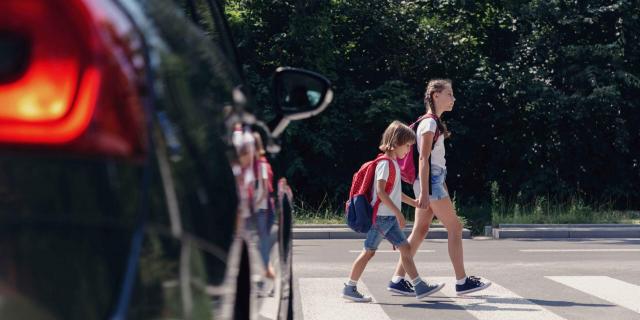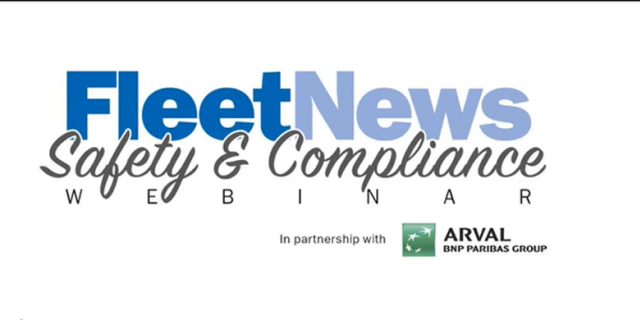GUIDANCE FOR FLEET MANAGERS
We have put together this practical guide to help you better understand the latest Government guidelines on keeping you and your employees safe while using vehicles during the pandemic.
We know not all businesses are the same so it is important to take into account the specific nature of your business and relevant actions required, including the size and type of business, how it is organised, operated, managed and regulated.
For more detailed information on the Government’s ‘Working safely during COVID-19’ guide, please visit: gov.uk/guidance/working-safely-during-coronavirus-covid-19 , you can also visit gov.uk for more general guidance.
Please note that this guidance does not supersede any legal obligations within existing Health and Safety legislation.
What you need to do
STEP 1: CARRY OUT A COVID-19 RISK ASSESSMENT
It is important to be alert to the risks to keep both you and your employees safe. This assessment must show how you will reduce the risk to the lowest reasonably practicable level by taking preventative measures. Please note that the term ‘workplace’ also applies to vehicles and in line with best practice, you should aim to implement measures that prevent and minimise contact, using the principles focussed on physical separation as the most preferred option.
Preventative measures include:
- Considering whether the activity needs to continue for the business to operate, and taking all mitigating actions possible to reduce the risk of transmission between staff
- Making every reasonable effort to comply with social distancing guidelines as set out by the Government
- Using screens or barriers to separate people from each other is something that can potentially be done within vehicles, taking care not to reduce visibility or compromise other vehicle safety features such as seat belts or airbags
- Keeping the activity time involved as short as possible
- Switching from face-to-face to back-to-back or side-to-side working wherever possible
- Increasing frequency of handwashing and surface cleaning in the workplace, focussed on touch points and shared spaces for example door handles and wash spaces
- Reducing the number of people each person has contact with by using ‘fixed teams’ or ‘partnering’
- Assessing whether the activity can safely go ahead if people must work in close contact for a continued period, and the measures outlined above are not practical
As part of your assessment you should consider whether employees and others working on your behalf are especially vulnerable to COVID-19.
What happens next?
Once you have carried out the risk assessment, it is important to:
- Share it with your workforce, ensuring it can be easily understood
- Publish the results on your website, if possible
- Display a notice like the one suggested within the gov.uk Guidance for employers, employees and the self-employed – this can be done by using cards, stickers or something similar to show you have followed the guidance
STEP 2: PRACTICE SOCIAL DISTANCING
Social distancing has become the norm and must be carried out in all aspects of our daily lives wherever possible. This means also adopting these measures whilst at work, including:
- While arriving at and departing from work
- While in work and when travelling between sites
- Applying this to all parts of the business, not just the vehicle. This also applies to depots, breakrooms and anywhere that employees congregate outside of the vehicle
Of course, it is not always possible to keep the recommended distance inside vehicles and changing vehicle configurations to create more space may not be practical. Therefore, you should always consider whether the activity is necessary for the business to operate. If it is, then it is important to take all the mitigating actions possible to reduce the risk of transmission between staff.
Useful tips for social distancing
There are a number of things that can be done, such as:
- Finding alternative solutions to two-person delivery. For example, delaying delivery of large items or using an alternative method. Where this is not possible, maintain fixed pairing for two-person deliveries and minimise physical contact
- Limiting passengers in corporate vehicles, for example, work minibuses, by leaving some seats empty
- Reducing the number of workers at base depots, link points or distribution centres at any given time based on minimum operational safety requirements
- Scheduling times for the collection of goods to avoid over-crowding
- Picking goods ahead of collection and loading onto vehicles without interacting with the driver
- Reducing job and location rotation
Where workers are unable to work effectively by maintaining a social distance, it is very important that appropriate mitigation measures are introduced to minimise the risk of transmission. These might include:
- Using physical screening – provided this does not compromise safety – for example, ensuring this does not reduce visibility
- Single person or contactless refuelling where possible
- Helping workers delivering to other sites such as: factories, logistics sites or customers’ premises, to maintain social distancing and hygiene practices through procedures to minimise person-to-person contact during deliveries to other sites
- Having a single worker load or unload vehicles wherever it is possible and safe to do so
- Minimising unnecessary contact at gatehouse security, yard and warehouse
- Maximising use of electronic paperwork wherever possible
- Encouraging drivers to stay in their vehicles where this does not compromise their safety and existing safe working practice
- Determining if schedules can be revised to reduce interaction and overlap between people
- Making delivery and receipt confirmation contactless and avoiding physical contact when handing goods over to the customer
- Sitting side-by-side, not face-to-face and increasing ventilation where possible (although avoid the use of fans)
- Assigning fixed groups of workers to the same routes where individual travel isn’t possible
- Using a fixed-pairing system if people have to work closely together in a vehicle
- Making sure vehicles are well-ventilated to increase airflow, such as by opening a window
- Ensuring regular cleaning of vehicles, particularly between different passengers
- Frequent cleaning of work areas and equipment between uses using your usual cleaning products
- Frequent cleaning of objects and surfaces that are touched regularly, such as door handles, fuel pumps and vehicle keys, and making sure there are adequate disposal arrangements for any waste
- Encouraging workers to wash their hands before boarding vehicles
- Maintaining sufficient quantities of hand sanitiser or wipes within vehicles to enable workers to clean their hands after each delivery and/or drop-off
- Clearing workspaces and removing waste and belongings from the vehicle at the end of a shift
- Providing clear signage to outline social distancing measures
- Providing guidance and explanation on social distancing and hygiene to passengers when they enter the vehicle
- Regularly briefing drivers and temporary staff, communicating to customers and providing in-vehicle guides and reminders for passengers and staff, in easily understood formats and language relevant to the group
- Making sure that all workers are kept up to date with how safety measures are being carried out or updated ensuring that workers understand the measures for reporting and self-isolation in the event that they, or someone that they have close contact with, has symptoms of COVID-19




